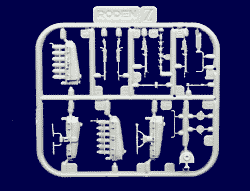


In April 1918, new fighters from Fokker, the D.VII, were delivered to the most experienced hunting units (Jastas). This plane was quite different among other fighters of the time, especially noted for it's excellent flight performance, strong construction, and high maneuverability. British and French pilots, who met the new fighter in the sky over the Western Front, gave it the nickname "Square-Nose". Dogfighting with "Square Nose" planes was fatal for allied planes in a majority of the cases. The first batch of Fokker D.VII's were built directly in the Fokker plants of Schwerin. German Air Command needed a greater quantity of new fighters, and soon the Albatros Werke received an order to produce the D.VII under license. Apart from the primary plants, located in Johannisthal, the Albatros company had branch plants in Schneidemuhl, named the Ostdeutschen Albatros Werken. The production possibilities of the OAW factory allowed building more aircraft than the Albatros and Fokker plants put together. The early OAW built planes were similar to Fokker built machines in almost all details. The main difference was the four-color lozenge fabric used on all surfaces except the nose, where a distinct "Giraffe" like pattern was applied, basically mauve stains on the green cowling. During May of 1918 the first bad news concerning the D.VII came from the Front: several D.VII's crashed after having in-flight fires, the origin of these fires remained unknown until Lt.F. Friedrichs survived an accident. He reported that the ammunition in his aircraft caught fire causing fuel vapor from the main fuel tank to flash. The ammunition installation was improved. Ventilation around the engine was improved by adding additional louvers on the engine side panels. Through all of the production period when OAW built Fokker D.VII's, different modifications produced different external cooling system louver locations. About 2000 Fokker D.VII's were built by OAW in total, more than 50% of all the D.VII's built. Allies captured a large quantity of uncompleted OAW D.VII's after the occupation of this region in Germany. |




| ||||||